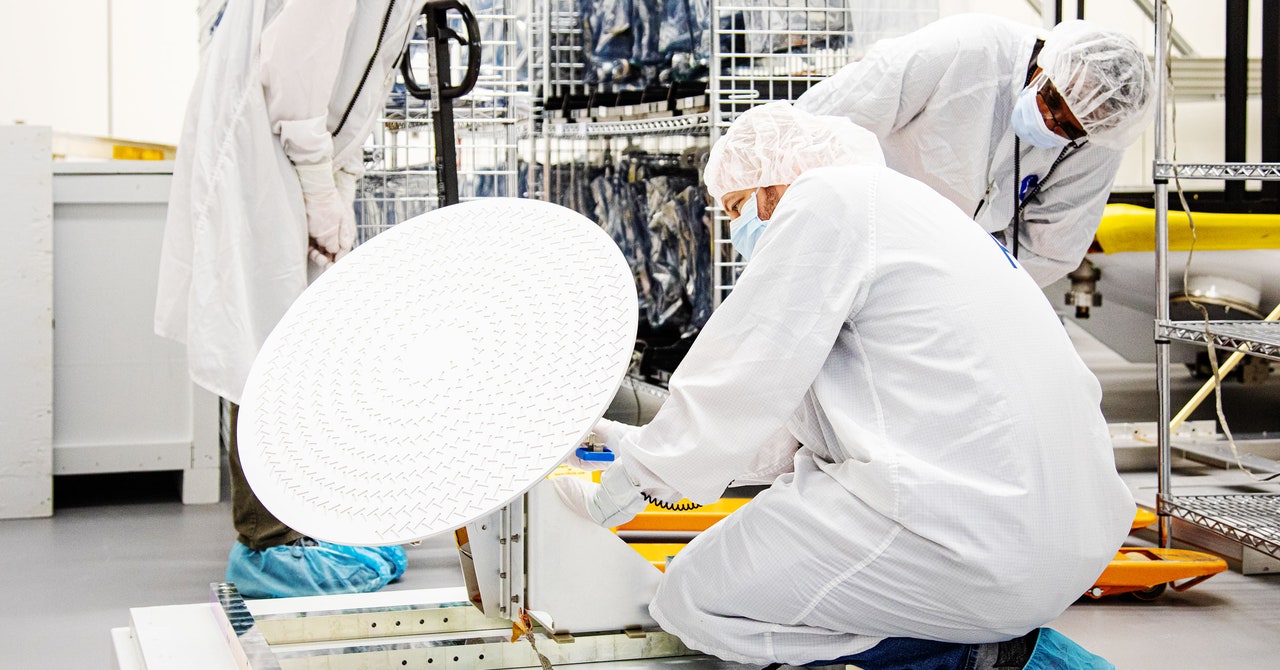
While Dimorphos resembles many other near-Earth asteroids, the DART team chose it as a target because it’s the junior member of an asteroid binary. It’s called a “moonlet,” and it orbits Didymos, its larger partner, like clockwork every 11 hours and 55 minutes. DART will hit Dimorphos at an angle of about 17 degrees with respect to its orbit, and scientists plan to measure how much its orbit consequently gets shifted. In other words, they can easily compare its motion with that of another nearby body. If they had chosen to strike a solitary asteroid, the minuscule deflection to its orbit wouldn’t be evident for years, until it made a close pass by the Earth. But thanks to the proximity of its partner, any alterations to the orbit of Dimorphos can be determined within days.
“It’s really a smart and clever way, and it’s cost effective. And it’s also safe: You’re nudging this moon a little close to the asteroid it already orbits,” Chabot says. She and her team expect DART to shorten the asteroid’s orbit by five to 15 minutes, so that it might only take 11 hours and 45 minutes to go around Didymos. NASA will consider a deflection of 73 seconds or more to be a successful mission.
The asteroid pair will be close enough for precise measurements with telescopes on Earth until March 2023. After that, they will travel farther away, as part of their path around the sun extends beyond the orbit of Mars. While the asteroids look like a single point of light from this distance, scientists will be able to measure how frequently the brightness of the reflected sunlight that bounces off Didymos dims—a proxy for the duration of Dimorphos’ orbit.
These asteroids, like many others and some meteors—space rocks that enter Earth’s atmosphere—aren’t dense and solid like billiard balls. They might be chunks of rock, gravel, and ice loosely held together in an arrangement called a “rubble pile,” with a stony composition similar to the asteroids Ryugu and Eros, and to the meteor that burst over Chelyabinsk, Russia, in 2013. In fact, the Dimorphos moonlet may have formed simply by spinning off the side of Didymos. If Dimorphos is rubbly, DART’s impact could make a crater, rather than flinging debris and significantly nudging the asteroid. But that uncertainty is one of the reasons for performing the mission.
For a more detailed inspection of the crash scene, the European Space Agency’s Hera mission comes next. The spacecraft is scheduled to launch in 2024. When it reaches the asteroidal duo in 2026, its optical camera, lidar tool, infrared scanner, and two CubeSat sidekicks will make detailed maps of Dimorphos’s surface and structure.
If a hazardous asteroid is ever actually bearing toward Earth, slamming a spacecraft—or a “kinetic impactor”—into it is just one tool at humanity’s disposal. NASA, ESA, and other space agencies have also been exploring other approaches, like positioning a spacecraft close by as a “gravity tractor” to pull it onto a different course, or detonating a nuclear explosion nearby to force it away. (Nuking the asteroid itself risks failure, since that could turn it into many rocks without changing their path by very much.) “The kinetic impactor is by far the most mature of these techniques,” said Lori Glaze, the director of NASA’s Planetary Science Division, at a media briefing on Sunday.


